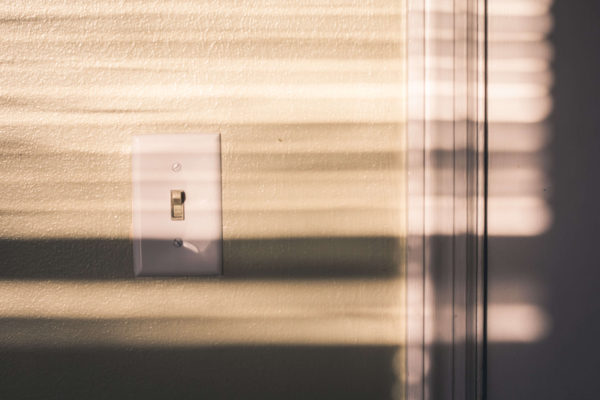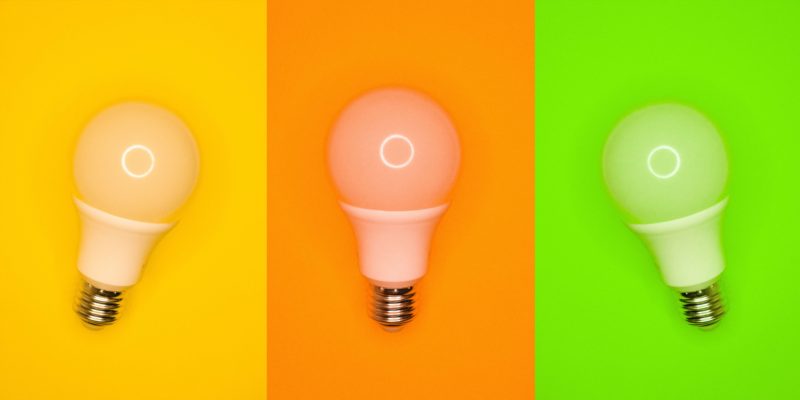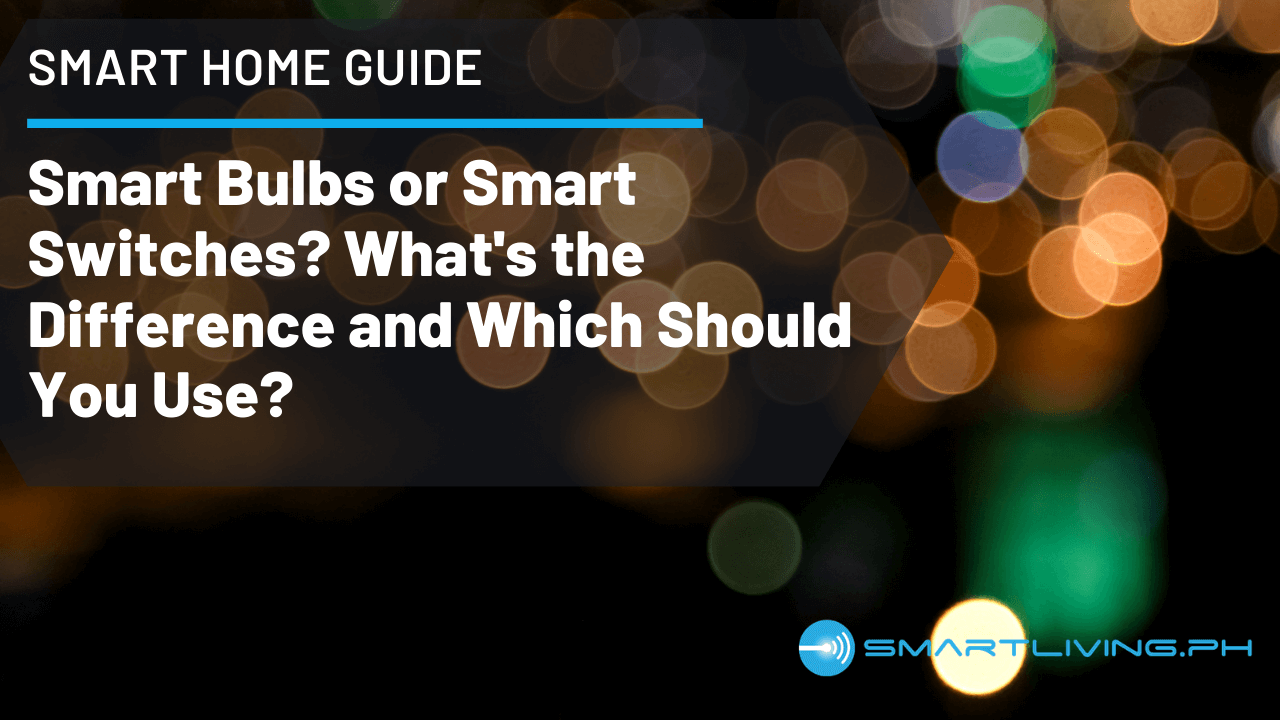Now that you’ve decided to start your home automation journey, the challenge now is where to start. A lot of people might have probably told you that smart lighting is a good entry point, and that is actually good advice. BUT, what they probably forgot to mention is that you have to face another fork in the road, choosing between smart bulbs and smart switches. It’s not as simple as one might think but don’t worry, we’re here to guide you.
What Are They?
Smart switches are simply light switches with Wi-Fi capabilities. As such, you can control the switch and all the lights in its circuit remotely through an app or via voice commands when you connect them to a smart assistant such as Google or Alexa. Smart bulbs can also be controlled remotely, but you are able to do more with them like change their colors and also their brightness.
Before we proceed, we just like to point out that while smart bulbs and smart switches are two different smart devices, they do share common features that are pretty useful to the average user:
- Smart switches and smart bulbs can be controlled anywhere through the accompanying app. All you need is an active internet connection for both your smartphone and the smart switch/smart bulb that you wish to control.
- You can set timers and light schedules for both devices. For lights that you always turn on and off at specific times, you only need to program this once in the app and you’ll never have to touch that light switch again. Some people actually use light schedules to make it seem that someone’s home whenever they’re out of town or in another country.
When To Use Them?
Choosing the right kind of smart light will largely depend on these two factors: users and lighting need. Different areas in your home have different lighting needs BUT when it comes to smart lighting, you also have to consider the people who are using it.

SMART BULBS are best used in places where mood lighting is essential. Normally, you need different kinds of lights to set different moods. With smart bulbs, you just need one kind and you will already have the ability to adjust the light’s brightness, change from warm white to cool white and even change its color depending on your lighting need. For example, your living room or entertainment room would be a good place to start. Having the ability to change the brightness and color of the lights would enhance your movie watching experience. The dining area would also be a good candidate to have smart bulbs especially if you like to set a different mood whenever you have guests in your home.
Personally, I use a smart bulb in our bedroom floor lamp since it serves as a night light and as an “aid” for my alarm. I programmed it to turn on at 10PM everyday at 20% brightness and to automatically increase its brightness to 100% at 5AM on weekdays to help me wake up faster since I usually set my phone alarm at that time. It then automatically turns itself off 10 minutes after sunrise. It only took me less than 3 minutes to program this in the app and the smart bulb has been executing this routine for the past 6 months (if you want to learn more about what smart bulbs can do, please click on this link 👉 What Can Smart Bulbs Do?.
SMART SWITCHES, on the other hand, are usually used in areas where mood lighting is not needed. Secondly, you also have to consider the people who use the lights in question. Before we proceed, though, we need to take a step back and understand why you also need to consider the kind of users.

Just like any smart device, a smart bulb needs to always be powered up and connected to the internet for it to work consistently. As such, the switch that powers it always needs to be at the “ON” position. Given this, there are only 3 ways to control it:
- Through the app, which is a bit of a hassle
- Through routines, which is impractical especially if people use that light often
- Through voice commands via a smart assistant such as Google or Alexa.
Obviously, Option 3 is the best and most convenient way of controlling a smart bulb. However, there are a lot of people who are still uncomfortable with talking to a smart speaker or display. Even if you tell everyone in your household to always ask Google or Alexa to operate that specific light bulb, believe me, they won’t. More often than not, you will find that switch turned off, and no one will ever admit that they were the one who flipped the switch. These are the reasons why smart switches should be used in common areas where you do not really need mood lighting.
This is why we at SMARTLIVING.PH never dictate to our customers which rooms or areas should have smart bulbs and smart switches. It really depends on the factors listed above, and the customer is in the best position to know which areas of his/her home should have smart bulbs and smart switches installed.
PROS AND CONS
Smart Switch Pros
- If you have a big home and use lots of lights, using smart switches would be more economical since you can control more lights with fewer units.
- Very easy to use. Changing to a smart switch will entail very little or close to zero adjustment for your household. You get the benefits of having an IoT (Internet of Things) device without the hassle of teaching everyone how to use it.
- Multi-control association or more commonly known as a 3-way switch. A 3-way switch allows a user to control a specific light or fixture from two different locations. The only problem is you need special wiring for this. With smart switches, you can get this feature by just wirelessly connecting two smart switches. Please note, however, that not all smart switches have this feature so you need to specifically ask if this feature is available. Our smart switches have this feature by the way 😀
Smart Switch Cons
- While smart switches are very easy to use, the same cannot be said with its installation. For you to install it, you have to be really knowledgeable and comfortable with handling electrical wires. Most people need to hire an electrician to install smart switches since connecting the right wires isn’t that straightforward. It’s also the safer option since you will be dealing with live wires.
- Another factor to consider is that most smart switches today require a neutral wire. This is a wire that carries the circuit back to the breaker panel. If you are unsure whether your home has this kind of wire, then you really need to consult with your electrician or building admin before you even consider purchasing a smart switch that requires a neutral wire.
- Mood lighting won’t be available if ever you decide to go with smart switches since that feature is currently available to smart bulbs only.
- If you’re just renting, installing smart switches will most likely require the approval of your landlord first. It’s also a bit impractical since you need to hire an electrician to re-install the old switches if you wish to bring your smart switches with you when you move to a different home.
Smart Bulb Pros
- Mood lighting. As mentioned above, smart bulbs have lots of features that allow the user to change the brightness, color and temperature of your light. It even has programmable “scenes” if ever you need different lighting effects for special events. If you want to learn more about smart bulbs then I suggest that you read our smart home guide about it, “What Can Smart Bulbs Do?”, or watch our video, “8 Useful Features of Smart Bulbs”.
- Very easy to install. Anyone can set-up a smart bulb since you only need to screw it in place and install it in the accompanying app. If you need to move it to a different area, you just simply move it there. You don’t even need to do the set-up process again since it will automatically reconnect to your router and have all of your original settings as soon as it goes online. So if you’re just renting, smart bulbs might be the more practical choice for you.
- No neutral wire needed. You don’t need to consult an electrician before buying a smart bulb, all you need to do is to make sure that the smart bulb that you plan to purchase will fit the light fixture you have in place.

Smart Bulb Cons
- Switch should always be at the “ON” position. As discussed previously, a smart bulb is just like any other smart device which should always be turned on. If not, it won’t be able to receive incoming commands from the accompanying app. This is a problem for people who are uncomfortable with controlling lights via voice commands. As mentioned earlier, you will find that switch turned off more often than not. When this happens, the smart bulb won’t be able to function properly and you won’t be able to control the smart bulb remotely.
- If you have a lot of smart bulbs installed in your home, memorizing all of their names will definitely be an inconvenience to all the members of your household.
- Not compatible with all light fixtures. Different fixtures need different kinds of light bulbs. While the most common light socket in the Philippines is E27, there are still a lot of light fixtures that require different kinds of light bulbs. Looking for all of them will definitely be more difficult than just getting a smart switch.
WHAT TO GET?
There’s no single answer to this question. One product cannot be considered superior to the other since they serve different needs. As we have outlined above, choosing between smart bulbs and smart switches will depend on two factors: users and lighting need. The key to maximizing smart light technology is not by choosing one device over the other, but by combining both.
If you would like to have smart lighting in your home, we suggest that you visit our store by clicking on this link 👉 SMARTLIVING.PH. To receive smart home guides, please subscribe to our newsletter by submitting your email address in the form below. You will also be notified when we have new products and promos.
Be smart. Live smart.
SMARTLIVING.PH
Your Partner in Building a Smarter Home


